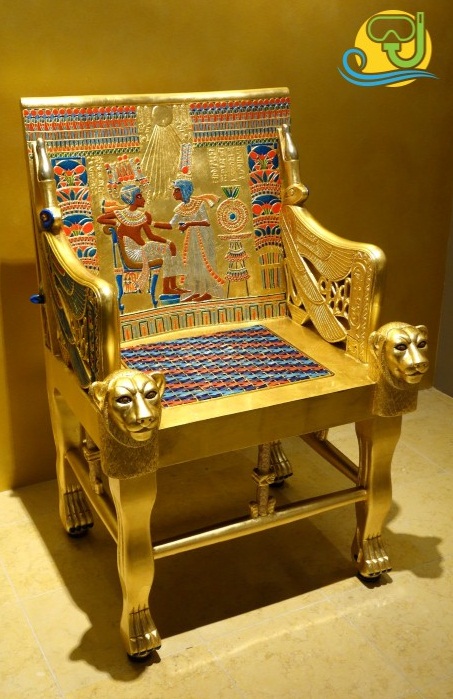
The Egyptian Museum
Egyptian Museum of Antiquities is located in downtown Cairo in Tahrir Square, Egyptian Museum Contains on the most valuable pharaonic monuments and antiquities collection in the world, there is no value to visiting Egypt without visiting the Egyptian Museum.
Muhammad Ali Pasha in 1825 issued a decree to build a museum to contain the Egyptian antiquities in the Azbakeya Lake, but rulers of Egypt at this time not realize the value of the monuments and ancient antiquities of Egypt and they giving some of it as presents to the tourists who visited Egypt at this time in the middle of 19th century.
The first collection was established by “Auguste Mariette” and in 1891 the objects moved to Ismail pasha’s Palace in Giza then transferred to the current museum building at “Tahrir square”, Egyptian museum considered to be the one of the largest, oldest and most famous museums in the whole world.
[tb_google_map address=”Egyptian Museum of Antiquities, Egypt.” height=”250px” zoom=”14″]
Egyptian Museum was designed by “Marcel Dourgnon” in the style of Neoclassical, Egyptian Museum contains 107 halls of valuable monuments and artifacts dating to the prehistoric as Roman period, but the most of the collection focused on the pharaonic time, the Egyptian Museum contains on about 160000 objects and antiquities covering more than 5000 years of the Egyptian history.
The Egyptian Museum Sections:
At the front of the museum you will find an artificial lake, a small one with some of papyrus and lotus plants which were the famous and important plants for the pharaohs, papyrus is that long green plant which was used by pharaohs to make papers and for your info that the word “Paper” in English and word “Papier” in French were delivered from Papyrus word.
The Ground Floor, A good tour will start from the ground floor which will take you on a chronological trip through the many of collections of the heavier displays like huge statues, stone carvings and coffins, and it the objects organized in this floor according to the pharaoh’s historical periods.

Egyptian Museum – The Ground Floor
The Upper Floor, Then move to the upper floor to find many of the lighter displays objects are grouped according to category or tomb, you will find wooden models of pharaonic daily life, rare samples of Faiyum Portraits, funerary objects, papyrus papers, statuettes of divinities and Tutankhamun’s treasures, also many of the royal mummies of the new kingdom will be found on the second floor.

Tutankhamun’s Chair
The Narmer plate or the plate of King Menes and he is the king who unifies the two regions of Egypt, lower Egypt and upper Egypt in one kingdom, the large plate was made out of the stone, and it is unique, it is the only monuments remaining for King Menes.
The Old Kingdom, The Displays of The Old Kingdom or it is known by the Pyramids builders age, and Pyramids of Giza were the important achievements of this period, also Pyramids of Saqqara, Pyramids of Abu Sir and the Pyramids of Dahshur, the capital of Egypt of this period was called Memphis and were located to the south of Giza, you will find a lot of objects of this kingdom and the rulers of this time were King Khafre, King Menes, King Senefru, King Chespos and King Zose.
The Middle Kingdom, with the 12th Dynasty rulers there are a changing in the conditions of living for Egyptians, it is improved also industries and arts greatly flourished too, but fighting between the nobles of this Dynasty turn the living conditions worsen once again, and it is opened the way for Hyksos to invade Egypt till the 17th Dynasty came and started fighting the Hyksos until they defeated by King Ahmose, and he is the founder of the 18th Dynasty and the beginning of the new kingdom.
The New Kingdom, the 18th Dynasty is the one of greatest dynasties that ruled Egypt, The Queen Hatshepsut, King Tut Ankh Amun, Ikhnaton and King Amenhotep were the most important rulers of Egypt in that period, the displays of this period contains many of monuments and antiquities for the most Egyptian gods as The God Amun and The Goddess Hathor.
Really is will not be able to call it a visit to Egypt without visiting The Egyptian Museum of Antiquities.
Check also in Cairo: The Sphinx and The Great Pyramids of Giza.







